seeking_pilgrim
Dope Dynamo
- Joined
- Sep 8, 2025
- Messages
- 5
- Reaction score
- 25
a µmol walks into a bar.
H says hi, C says boom.
plants whisper: “ppfd please, not volts.”
H says hi, C says boom.
plants whisper: “ppfd please, not volts.”
Follow along with the video below to see how to install our site as a web app on your home screen.

Note: This feature currently requires accessing the site using the built-in Safari browser.
It hit me too. Had a few days to go but got me the last week. Only one plant but that’s half the harvest.View attachment 113131View attachment 113132View attachment 113133
Some powdered mildew issues and burned them some with the potassium bicarbonate solution. My first time with this issue. Should have identified and fixed sooner
Some males were identified and removed
Some defoliation was done a few weeks back
Phosphorus increased and some calcium nitrate added again. Also some kelp soluble extract given
I’m curious about the ascorbic acid!Some calmag and phosphorus given with a pinch of ascorbic acid
View attachment 113642View attachment 113643View attachment 113644View attachment 113645View attachment 113646View attachment 113647
It's a natural growth regulator. Think of it like preventing scurvy. It's involved in a number of vital biological processes and functions. Plus it acts like a type of organic acid buffer, just going easy and watching your ph. A pinch or tsp per five gallon is what I occasionally use in the watering. Also make damn sure of its purity and contains no trace of deadly citric acid.... plants cannot tolerate citric acid like humans canI’m curious about the ascorbic acid!
Do you put it in the nutrient solution?
Put it In water solo?
Also, what does that do for the plants! I’m curious.
So the other big reason I do it Tom beyond what it does for the plants health is taste. Vitamin c is tart/sour and I hope to fuse some of that taste into the plantsI’m curious about the ascorbic acid!
Do you put it in the nutrient solution?
Put it In water solo?
Also, what does that do for the plants! I’m curious.
Please report back, that would be a good addition for some SativasSo the other big reason I do it Tom beyond what it does for the plants health is taste. Vitamin c is tart/sour and I hope to fuse some of that taste into the plants
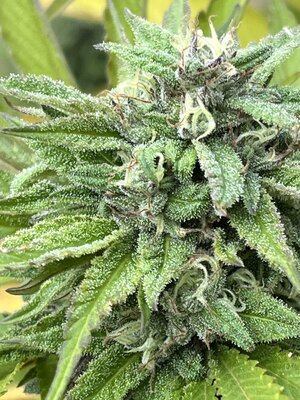
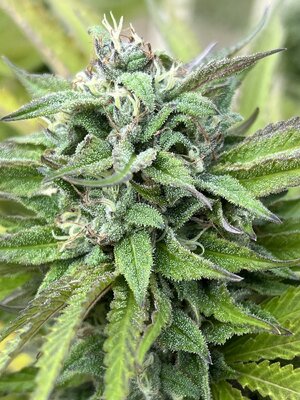


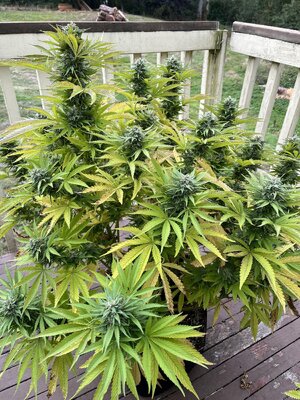
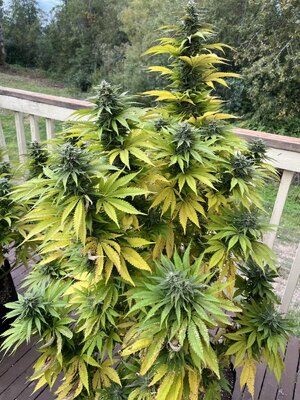
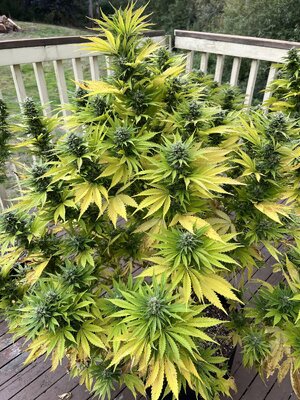
Looks great.I'm still learning this outdoor stuff and it's getting cooler down into the lower 50s at night and a few days of rain coming up soon so I figured I might need to pull them a little earlier than I usually would like
Cloudy with about 10% ambers but I'm pretty used too indoors and these look way less developed which I expect to some degreeLooks great.
What do you look for to determine your preferred time to harvest? The trichomes look fully clouded. I think some people would target harvesting, now. Others like it to ripen more to varying degrees. I'm just curious what you like to see that tells you it's time to harvest.
Thanks Franksta. I'm learning and am always curious about how people with experience approach stuff. I hope however you decide to time this harvest works out for you. I'm trying to let my outdoor plants mature longer than I was able to last year. I have them covered from the daily rain, but it has been a real challenge dealing with the humidity.Cloudy with about 10% ambers but I'm pretty used too indoors and these look way less developed which I expect to some degree
